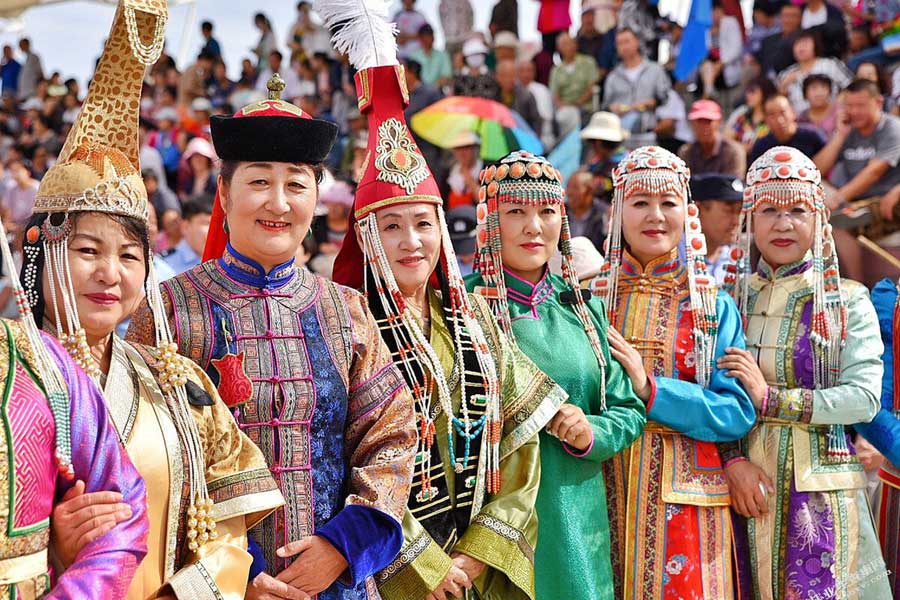The Mongolian ethnic group is a nation with a long history. Mongolians are widely spread all over the world. They had a very important influence on the history of the world, a nation that once founded the Great Mongol Empire across Eurasia. Their national hero is the conqueror of the world, Genghis Khan. There is still a country on the Mongolian Plateau that is dominated by Mongolians called Mongolia.
The population of the Mongolian ethnic group in China is about 6.5 million. Mongolian ethnic groups are mainly scattered in Inner Mongolian Autonomous Region and northeast China, and in Xinjiang, Hebei, and Qinghai Provinces. The rest are scattered in Henan, Sichuan, Guizhou, Beijing, and Yunnan Provinces. Mongolians once established a strong central dynasty in China, the Yuan Dynasty.
Mongolians are an ethnic group of people from the grassland; their traditional lifestyle was always related to grassland and animal husbandry.
Apparel of the Mongolian ethnic group
The traditional Mongolian costumes are the Mongolian robes, which mainly include robes, belts, boots, jewelry, etc. But there are differences in style from one area to another. Mongolian costumes are characterized by rich grassland style, mainly robes that are easy to ride on a pommel horse.
Food and Drink
The Mongolian traditional diet is divided into two kinds: red food and white food. The food made from milk is called “Chagan Yide” in Mongolian, which means holy and pure food, namely “white food”. The food made from meat is called “Wulan Yide” in Mongolian, which means “red food”. The famous Mongolian traditional dishes are hand-held mutton (mutton pieces on the bone, eaten with fingers), whole roasted sheep, and Mongolian pie.
In addition, the Mongolians like to drink Kumis (horse milk wine). July and August is a season to brew Kumis. The hard-working Mongolian women put mare’s milk into the leather bag and stir it. After a few days, the milk separates and ferments into wine. Horse milk alcohol can dispel cold, relax sinew, invigorate blood, invigorate the stomach, and has other effects.
Traditional Festivals
In July and August of each year, there is a “Nadam Conference”. It’s a traditional festival with a long Mongolian history, which is held to celebrate the harvest and have cultural and recreational activities. The Nadam Conference has three traditional competitions: horse racing, wrestling and archery.
Religions of the Mongolian ethnic group
The Mongolian religion is very similar to that of Manchu, both of which believe in Shamanism and Buddhism.
Taboos of the Mongolian ethnic group
There are many taboos in the life and social intercourse of the Mongolian people. The following are the points that should be mentioned:
When eating meat with a knife, avoid tip punches when handing the knife to others.
Mongolians believe that water is a pure spirit. They do not wash hands, bathe or wash clothes in rivers, and they do not throw unclean things into the river.
The Mongolians regard “9” as an auspicious number and 9 as an eternal meaning.
Aobao is a Mongolian word meaning “heap”. Mongolians live on the prairie, and people pile up stones as a sign of the road and boundary and act as a guide, direction, and administrative division. Later, it gradually became a symbol of sacrifice to the mountain god, the road god, and a prayer for a good harvest, happiness, and peace of the family.

